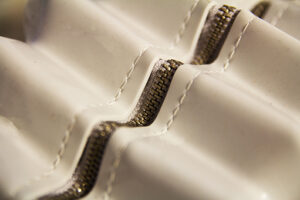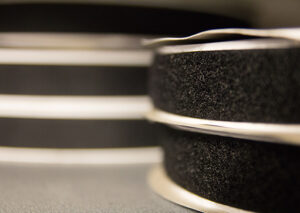inner diameter
The inner diameter of the bellow. Please note: this does not have to be identical to the cuff/flange diameter.
outer diameter
The outer diameter of the bellow. Please note: this does not have to be identical to the cuff/flange diameter.
Maximum length
Measured from the first to the last fold without cuffs/flanges.
Minimum length
Speaks for itself. The lowest compression a bellow can achieve. for the best ratio between LMIN and LMAX, we recommend our MSflex product line.
fold depth
The measurement from the top of the fold to the bottom of the fold. Depending on the application and product line, we will advise you on the optimal design ratio.
Difference between LMIN and LMAX
Ultimately, this is the travel distance of a bellow. This can be restricted, should it be technically necessary, by extension locks.
The connection of a bellow for installation can be at the top or bottom.
As the name suggests, the sleeve is placed over the machine flange and then secured in place. On request, we can also supply matching hose clamps, clamps, cable ties or spring band clamps.
The connection of a bellow for installation can be at the top or bottom.
We manufacture flanges that are precisely tailored to the application. These can be made of rubber, textile, metal, PVC or other materials as required. Drilling patterns, countersinks, hooks, cut-outs, etc. are possible to ensure a perfect fit for the machine.
Diameter of the cuff (1 = top, 2 = bottom); b1/2 represents the cuff height.
Diameter of the flange (1 = top, 2 = bottom)
Depending on various parameters of a bellow, it may be necessary to install a pull-out stop.
This option is mainly required to prevent overstretching of the folds. Depending on the product line, this may even be absolutely necessary in some cases. We offer both internal and external pull-out stops in a variety of designs. Our design department will be happy to assist you in this regard.
Mechanism for venting and de-venting bellows from different product lines
Depending on the travel speed, adequate ventilation of a bellow may be necessary. Depending on the application, these can be designed in different ways: as flaps, holes or with screens or fine membranes.
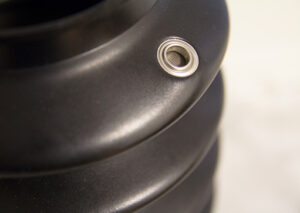
Ring made of aluminium/steel wire of various grades
Inserted into the end of the fold to stabilise the fold when fully extended so that it cannot crease.
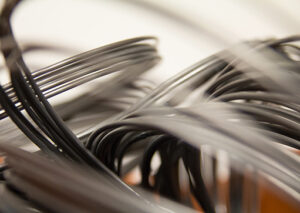
Individually adapted for the application
Inserted into the fold to stabilise it when fully extended, preventing it from buckling.
Individually adapted for the application, suitable for all common spindle types and cylinders.
Inserted in some folds, usually every 400 mm, to stabilise the bellow when fully extended so that it cannot collide with the internal spindle that needs to be protected. Otherwise, the bellow can jam, leading to machine downtime and increased spare parts requirements.
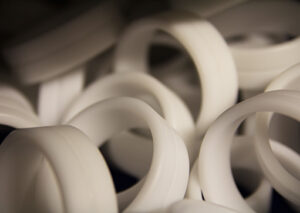
Everything that the bellow has to endure.
The media and conditions are a decisive factor in selecting the right bellow/machine guard. This is determined by manufacturing processes and, above all, the materials. Both internal and external influences are important here. These include, in particular, oils/greases, dust, sparks, slag, acids, alkalis, chips and water.
Structural element that serves to guide the bellow.
Some bellows, machine guards and covers must be explicitly guided during use. These can be designed for internal or external use. On request, our MSslide slideway guards, for example, can be adapted to the existing profiles of linear rails. Thanks to our high level of vertical integration, in production we can also implement highly customised solutions here.
For easy connection and immediate installation, we are happy to supply additional items such as hose clamps, screws, flanges or clamp rings.
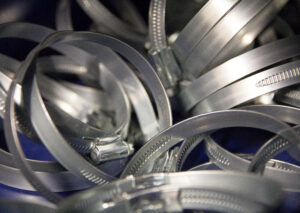
This is usually used to retrofit a bellow to the machine, especially during servicing or when a bellow that has reached its wear limit needs to be replaced. Depending on the product line, there are various options available, with Velcro strips or zip fasteners often being used for this purpose.
